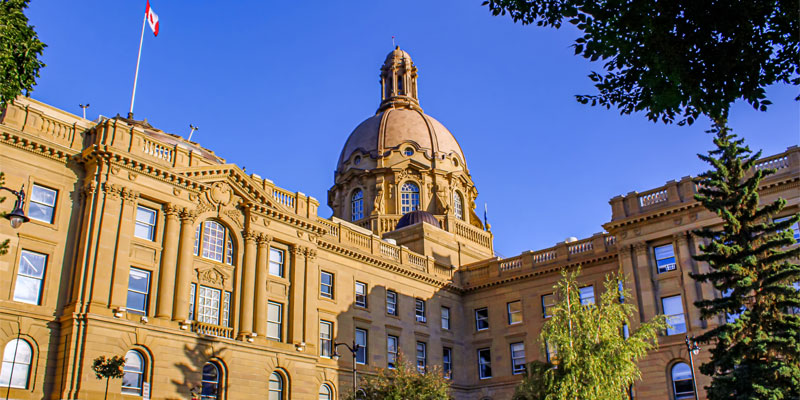Kenney government must learn from fiscal mistakes—and successes—of the past

As the Kenney government prepares to table its budget next week, it’s a good time to review some recent Alberta fiscal history. During the early 1990s, the province faced daunting fiscal challenges. With a long string of budget deficits and rapidly growing debt, interest payments became an increasing burden on Albertan taxpayers. Alberta was not alone. The federal government and many provinces faced similar challenges which, taken together, constituted a national government finance crisis.
While it’s well-known that Alberta faces fiscal challenges today, what’s perhaps less well-known is that the province’s challenges are remarkably similar to those of the ’90s. Only understanding the severity of the challenge can we begin to understand the type of reforms necessary to address them.
Let’s first consider the size of the province’s annual budget deficits. This year’s deficit will be the largest in history (relative to the size of the provincial economy) at 6.9 per cent of GDP (2020/21). Of course, this is an extraordinary year due to COVID-19. However, even pre-pandemic, the province’s annual shortfalls were comparable to those in the 1990s.
In the five years before the pandemic, budget deficits in Alberta averaged 2.7 per cent of GDP. In the five fiscal years leading up to and including the worst deficit of the ’90s (1993/94), the average deficit was only slightly higher at 3.1 per cent of GDP. Put simply, even before COVID, Alberta’s deficits were comparable to those of the 1990s.
Of course, budget deficits add up and contribute to the growth of provincial debt. In terms of net debt (total debt minus financial assets), Alberta is projected to be in worse shape than in the 1990s. Back then, Alberta’s net debt-to-GDP ratio peaked at 16.1 per cent in 1993/94 compared to this year’s forecasted 20.6 per cent, with further growth expected in the years ahead.
Governments—namely, taxpayers—must pay interest on this debt. Debt-interest payments today are lower than they were in the 1990s, but the gap is closing quickly. Debt-interest payments (as a share of all government revenue) peaked at nearly 11 per cent in the 1990s. Following the Klein reforms, this number fell to 0.5 per cent. As recently as 2015/16, debt-interest payments in Alberta were still negligible but are catching up to 1990s levels and in 2021/22 are expected to consume 6.4 per cent of provincial revenues, despite much lower interest rates today than in the ’90s.
For all these reasons, multiple independent analyses show that Alberta’s finances are, just as they were in the 1990s, unsustainable.
Given that Alberta’s fiscal challenges today are so similar to the challenges of three decades ago, it’s helpful to consider how similar problems were solved back then. As shown in our recent study, Alberta finally solved its fiscal problems of the 1990s by reducing government spending rather than raising taxes (or simply hoping for natural resource revenues to rise and solve the problem). Alberta’s treasurer of the day Jim Dinning, described the province’s fiscal problem: “For years, governments in Canada have been living beyond their means. Governments have put off paying bills until tomorrow in the mistaken belief that revenue will catch up to spending. Overspending, not lack of revenue, is the problem.”
Put simply, the Klein government focused its deficit-elimination efforts on addressing the root of Alberta’s problems—government spending. In this effort they were extraordinarily effective, reducing nominal program spending by 21.6 per cent over just three fiscal years, quickly eliminating the deficit and setting the province on a path towards “debt free” status.
Crucially, the Klein government eliminated the deficit without any meaningful help from rising natural resource revenues. Instead, the government reduced spending levels, which were within its control.
This dimension of the Klein reforms deserves particular attention today. Alberta’s fiscal challenges similarly stem from its spending problem, and natural resource revenues this year will be nearly non-existent. Once the COVID crisis is behind us, it will be tempting for the Kenney government (or any successor) to pin deficit-elimination efforts on a rebound in resource revenues. A key lesson from the Klein era is that a reliable deficit-elimination strategy should focus on spending reductions rather than waiting and hoping for resource revenue growth.
Across Canada, the early 1990s are remembered as dark days for government finances. Alberta faces similar fiscal challenges today. It’s important for Albertans and their governments to recognize the severity of the challenges we face and remember how similar problems were successfully addressed 30 years ago.

